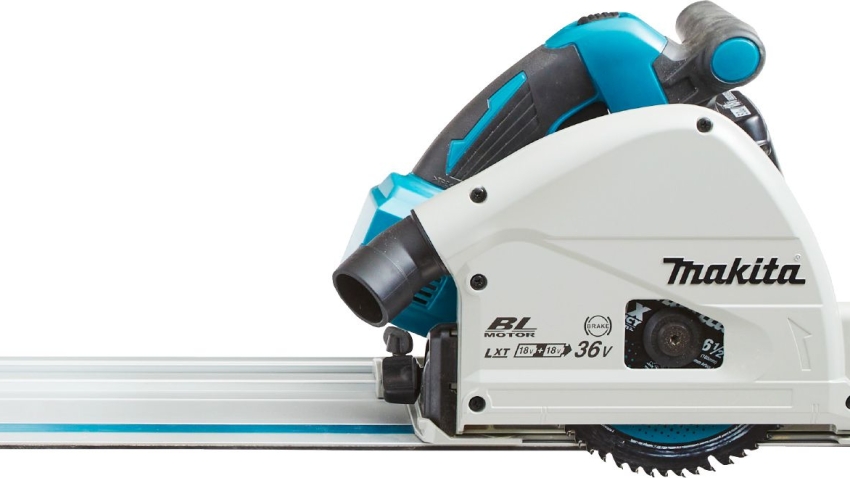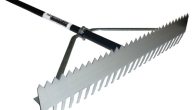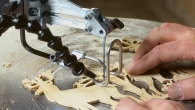
Track Saw vs Circular Saw: Choosing the Right Tool for the Job
For DIYers and woodworking enthusiasts, both track saws and circular saws are essential tools for making precise cuts. But with some key differences, choosing the right one for your project can make all the difference between a clean finish and a frustrating experience. This article will delve into the strengths and weaknesses of each saw, helping you navigate their functionalities and determine which tool best suits your needs.
Circular Saw: The All-Rounder
Circular saws are the workhorses of the saw world. Compact, portable, and versatile, they excel at a wide range of cutting tasks. Their exposed blade allows for freehand cutting, making them ideal for:
- Breaking down sheet goods: Plywood, MDF, and drywall are easily tackled by a circular saw’s powerful motor.
- Rough cuts: Framing lumber, ripping boards, and making quick, non-critical cuts are all well within a circular saw’s capabilities.
- Beveling cuts: With the blade tilted at an angle, you can create angled cuts for crown molding, roof rafters, and other applications.

Circular Saw: Maneuvering Magic, But Mind the Details
However, circular saws come with some limitations. Because they lack a guiding track, achieving perfectly straight cuts requires a steady hand and practice. Additionally, the exposed blade can cause chipping on the bottom side of the cut, especially when dealing with delicate materials like veneer plywood.

Dust Collection Can Be a Challenge
Circular saws typically have dust collection ports, but their effectiveness can be limited. This can be a drawback for projects where dust control is a priority, such as working indoors or with fine-grained materials.

Track Saw: Precision Takes Center Stage
Track saws, also known as plunge saws, offer unparalleled cutting accuracy. They feature a circular blade housed within a base that rides along a pre-clamped track. This guided cutting system ensures:
- Straight, splinter-free cuts: The track guarantees a perfectly straight cut line, eliminating the need for meticulous marking and freehand maneuvering. This is especially beneficial for long rip cuts or intricate joinery.
- Splinter-free cuts on both sides: The enclosed design of the track saw minimizes chipping on both the top and bottom of the cut, making it ideal for fine woodworking projects.
- Plunge cutting capabilities: Unlike circular saws, track saws allow you to plunge the blade directly into the material at any point. This is useful for creating cutouts, dadoes, and other joinery features.
Track Saw: Not Without Its Quirks
While offering superior precision, track saws come with their own set of considerations.
- Less Portable: The additional track system makes them bulkier and less portable than circular saws. Setting up the track adds an extra step to the cutting process.
- Limited Cutting Depth: Track saws typically have a shallower cutting depth compared to some circular saws. This might be a concern for projects involving thick materials.
- Cost Factor: Track saws tend to be more expensive than circular saws due to their additional features and the track system itself.

So, Which Saw Reigns Supreme?
The answer depends on your specific needs and priorities. Here’s a breakdown to help you decide:
- Choose a circular saw if: You prioritize portability and versatility for rough cuts, breaking down sheet goods, and occasional angled cuts. You’re comfortable with practicing freehand cutting techniques and dust control isn’t a major concern.
- Choose a track saw if: Precision and clean cuts are paramount for your projects. You frequently perform long rip cuts, intricate joinery, or work with delicate materials. Plunge cutting capabilities and superior dust collection are important factors.
Finding Common Ground: The Best of Both Worlds
While these saws serve distinct purposes, there are situations where they can complement each other. For instance, a circular saw with a guided track attachment can offer a more affordable alternative for occasional precision cuts. Conversely, a track saw paired with a straightedge can handle some freehand cutting tasks when portability is a factor.

Skill level
Circular Saw: Master of Many Trades
Circular saws are excellent choices for beginners and experienced woodworkers alike. Their affordability, portability, and ability to handle various cutting tasks make them ideal for building confidence and tackling a wide range of projects.
- Beginners: The ease of use and clear line of sight on the blade allow beginners to practice basic cutting techniques and gain comfort with power tools. Circular saws are perfect for learning to rip lumber, break down sheet goods, and make quick, non-critical cuts.
- Experienced Woodworkers: While circular saws might not be the go-to for high-precision cuts, their versatility makes them valuable assets for experienced woodworkers. They can be used for rough cuts, breaking down large materials, and quick adjustments on the fly.
Track Saw: Precision for the Discerning Woodworker
Track saws, on the other hand, cater more towards intermediate and advanced woodworkers who prioritize precision and clean cuts.
- Intermediate Woodworkers: As skill levels progress, the need for accurate cuts becomes more crucial. Track saws offer a step up in precision for intricate joinery, long rip cuts, and working with delicate materials.
- Advanced Woodworkers: For professional woodworkers, the superior control and splinter-free cuts of a track saw are essential for high-quality furniture making and cabinetry projects. The plunge cutting capabilities further enhance their ability to tackle complex joinery.
Finding the Right Fit for Your Skillset
By considering your skill level and project requirements, you can make an informed decision.
- Beginners: A circular saw is a great starting point due to its affordability and user-friendliness.
- Intermediate Woodworkers: As your skills develop, a track saw can become a valuable addition for tackling more intricate projects.
- Advanced Woodworkers: For those prioritizing precision and high-quality results, a track saw is likely the preferred choice.
Remember, some experienced woodworkers might own both a circular saw and a track saw, utilizing each for its specific strengths.
The Final Cut: Making an Informed Choice
Ultimately, the best saw is the one that best suits your project needs and skill level. By understanding the strengths and weaknesses of both track saws and circular saws, you’ll be well-equipped to choose the right tool for the job, ensuring clean cuts and a successful woodworking experience.












Leave a Reply